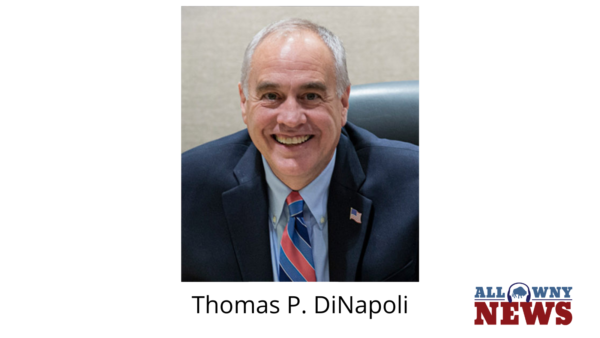
With federal legislation ending continuous Medicaid coverage in March 2023, New York state began the process of redetermining eligibility for every enrolled individual. An analysis by State Comptroller Thomas P. DiNapoli found this “unwinding” may not meet projections in the Division of the Budget’s (DOB) Mid-Year Update to the Enacted Budget Financial Plan, adding costs to the state budget.
“Increased enrollment in Medicaid is one of the key reasons New York has one of the lowest rates of uninsured individuals in the nation,” DiNapoli said. “Now that the federal continuous coverage requirements have ended, the state should account for those who are removed from Medicaid coverage and make every effort to help people renew their coverage in public and private plans. The state should also publicly account for any additional spending required to support elevated enrollment levels.”
Prior to the pandemic, states were required to renew coverage for people with Medicaid at least once a year and to disenroll individuals who no longer qualified for coverage. Since early 2020, enrollees in New York Medicaid – as well as in the Child Health Plus and Essential Plan public health insurance programs – have not had to renew their coverage due to COVID-19 public health emergency continuous coverage requirements enacted by federal legislation. These requirements prevented states from terminating a person’s coverage, even if they no longer qualified. As a result, New York Medicaid enrollment rose from 6.1 million in January 2020 to just over 8 million in June 2023, an increase of 31.5%.
Federal legislation ended the continuous coverage requirements as of March 31, 2023, and required states to begin the process of redetermining eligibility for every individual enrolled in Medicaid, referred to by the federal government as the “unwinding,” over a 14-month period. The state began sending renewal notices in the early spring to Medicaid enrollees with June 30, 2023 coverage end dates, and is sending renewal notices monthly to groups of enrollees, based on their enrollment end dates, through May 31, 2024. Renewal notices include the deadline for enrollees to take action to renew their insurance or risk having a gap in coverage.
Since the Department of Health (DOH) began redetermining eligibility in the Medicaid program, enrollment has decreased by approximately 190,000 individuals (2.4%) – from a peak of 8 million in June 2023 to 7.8 million in August 2023. According to the DOH, approximately 82% of Medicaid enrollees are re-enrolling in Medicaid.
Financial Plan Impact
Enrollment projections included in DOB’s Mid-Year Update to the Enacted Budget Financial Plan for State Fiscal Year (SFY) 2023-24 reflect the anticipated impact of the unwinding process. This is projected to reduce the number of Medicaid enrollees to 6.9 million by April 2024 – a decrease of almost 888,000 enrollees within the SFY – and to 6.6 million by April 2025 and beyond.
Monthly Medicaid enrollment figures and re-enrollment rates to date suggest that the state may not meet current Financial Plan projections. DiNapoli estimates that the state could face nearly $1.5 billion in additional state share Medicaid costs in SFY 2023-24 as a result of higher-than-anticipated enrollment levels.
This estimate is based on two risks. First, assuming enrollment continues to decline at its current pace, it would reach 7,176,165 enrollees at the close of SFY 2023-24, 274,755 enrollees higher than DOB’s projection for the year. At a state share cost of $4,020 per enrollee, this would increase state share Medicaid spending by about $1.1 billion in SFY 2023-24.
The second risk relates to individuals who fail to renew their Medicaid coverage – referred to as “renewals outstanding” in DOH’s monthly Public Health Emergency unwinding reports – but ultimately re-establish Medicaid eligibility at a later date. Through September, DOH’s monthly data indicate that 4.6% of each monthly cohort, on average, renews late.
DiNapoli estimates that unanticipated state share Medicaid costs could grow by an additional $186.1 million, to nearly $1.3 billion in SFY 2023-24 if 5%, or 46,291 individuals, identified as renewals outstanding renew their Medicaid coverage at a later date. Unanticipated costs would increase by an additional $372.2 million to nearly $1.5 billion, if 10%, or about 92,592 of such individuals, eventually renew their coverage.
All WNY is made possible thanks to coffee and sleep deprivation.
We appreciate your readership. We like money, too.

